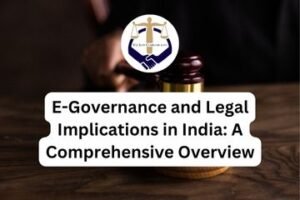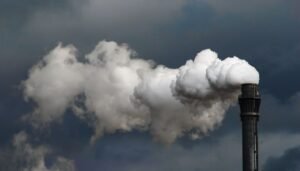Legal Frameworks for Protecting Whistleblowers in Media
Written by Ms Bhaviya Singh
Introduction
In order to expose wrongdoing, fraud, and corruption in both public and private institutions, whistleblowers are essential. They are people who disclose unlawful, immoral, or damaging activities to the authorities, frequently via the media, in order to expose them. Maintaining accountability and openness in the public and private sectors depends on protecting whistleblowers. Whistleblowers, however, can fear reprisals in the form of lost jobs, legal troubles, or physical violence. For this reason, legislative frameworks protecting them are essential, particularly in the media industry where information sharing can have far-reaching effects. This article explores the legal frameworks that have been put in place both internationally and domestically in India to safeguard whistleblowers, specifically with regard to disclosures made through the media.
1. Global Legal Frameworks
a) United States: Whistleblower Protection Act (WPA)
Federal employees who disclose malfeasance in the United States are afforded robust safeguards under the Whistleblower Protection Act of 1989 (WPA). When employees report information about legal infractions, egregious mismanagement, abuses of power, or dangers to public safety, they are shielded from reprisals under the WPA. The WPA contains special rules pertaining to media disclosures that guarantee, under certain circumstances, that whistleblowers can report to Congress or the media without fear of retaliatory job measures.
- Key Provisions:
- Protects federal employees.
- Allows reporting to media if internal mechanisms fail.
- Protects against employer retaliation, including job termination or demotion.
b) European Union: EU Whistleblower Directive (2019/1937)
A comprehensive legal framework that unifies whistleblower protections throughout EU member states is the EU Whistleblower Directive, which was implemented in 2019. It requires the creation of secure routes for reporting and shields informants from retaliation like as firing or demoting them. If proper action is not taken as a result of internal or external reporting, media whistleblowing is covered.
Key Provisions:
- Ensures protection across all member states.
- Encourages internal reporting first, but allows media disclosures in the public interest.
- Protects whistleblowers from civil, criminal, and disciplinary actions.
c) United Kingdom: Public Interest Disclosure Act (PIDA) 1998
The Public Interest Disclosure Act (PIDA) of 1998 provides legal safeguards for individuals who reveal information that is in the public interest, and it protects whistleblowers in the United Kingdom. The statute allows disclosures to external entities, including the media, in certain circumstances, such as when internal reporting proves unsuccessful or internal reporting poses a risk to the whistleblower.
- Key Provisions:
- Protects individuals from retaliation.
- Encourages internal reporting but permits media disclosures in cases of serious misconduct.
- Provides protection from dismissal or unfavorable treatment.
2. Legal Framework in India
a) Whistleblowers Protection Act, 2014
2014 saw the passage of India’s Whistleblowers Protection Act, which protects people who reveal wrongdoing, misuse of authority, or corruption in public office. The act guarantees the confidentiality of whistleblowers’ identity and shields them from reprisals. The law can indirectly help media whistleblowers when corruption or malfeasance in public institutions is revealed, even if its primary target is government personnel.
- Key Provisions:
- Provides protection to whistleblowers against retaliation.
- Preserves confidentiality of the whistleblower’s identity.
- Allows reporting of corruption, abuse of power, and other public interest violations.
However, the act has been criticized for its limitations:
- It doesn’t provide explicit protection for media whistleblowers.
- Amendments in 2015 have diluted the law by prohibiting the disclosure of matters related to national security, threatening to curb significant disclosures through the media.
b) Right to Information (RTI) Act, 2005
The Right to Information (RTI) Act in India has served as a critical tool for exposing corruption and misconduct by empowering citizens to request information from public authorities. Although not directly related to whistleblowing, the RTI Act plays a crucial role in enabling journalists and the public to access information that may trigger whistleblowing activity.
- Key Provisions:
- Empowers citizens to obtain information from public bodies.
- Can be used by media to investigate public interest issues.
However, several RTI activists who have exposed government corruption have faced harassment, violence, and even death, underscoring the need for a more robust protective framework for whistleblowers in India.
c) The Companies Act, 2013 (Section 177)
A robust mechanism for reporting concerns about unethical acts must be established by listed firms, according to Section 177 of the firms Act of 2013. The purpose of this clause is to incentivize corporate whistleblowers, as media reports have the potential to reveal corporate malfeasance.
- Key Provisions:
- Applies to listed companies.
- Requires the establishment of a whistleblower mechanism.
- Ensures confidentiality and protection against victimization.
3. Challenges in Protecting Media Whistleblowers
While several legal frameworks exist to protect whistleblowers, there are significant challenges in safeguarding those who approach the media.
a) Fear of Retaliation
Especially when their exposes involve influential organizations, whistleblowers frequently fear reprisal from their companies or the government. Legal safeguards are not always enough, and whistleblowers have occasionally been charged with crimes for breaching confidentiality agreements or revealing private information.
b) Legal Limitations and Loopholes
Legal restrictions or gaps frequently exist, even in countries where whistleblower rights are robust. Whistleblowers who reveal information on sensitive government operations or matters of national security, for instance, might not be protected in India. In a similar vein, corporate whistleblowers who reveal private information or trade secrets may be prosecuted.
c) Media’s Role and Responsibility
Whistleblower disclosures are greatly increased by the media, but they also have an obligation to make sure that the material is accurate and serves the public interest. Journalists have to walk a tightrope when it comes to safeguarding their sources and avoiding legal action for slander or disclosing private information.
4. Recommendations for Strengthening Legal Frameworks
To better protect whistleblowers who rely on the media to expose wrongdoing, the following recommendations could be considered:
- Strengthening Confidentiality Protections: Laws must protect whistleblowers’ identities, especially when revelations are made to the media.
- Broader Protection: Laws should provide protection from reprisal to those who reveal corporate or non-governmental wrongdoing to whistleblowers in the private sector and civil society.
- Criminal Immunity: If a whistleblower discloses information in the public interest and with good intentions, they should be protected from criminal prosecution.
- Media Protections: When covering whistleblower disclosures, media organizations ought to be given legal protection to make sure that journalists are not punished for disclosing private material that is in the public interest.
Conclusion
By bringing misconduct to light, whistleblowers act as a vital check on authority, and the media is crucial in getting the public to know about their revelations. Although legal frameworks in the US, EU, and India have developed to protect whistleblowers, there are still obstacles to overcome, especially for individuals who depend on the media to disseminate sensitive material. Improving these legal safeguards is essential to developing an accountable and transparent culture.
Reference
https://freedex.org/resources/sources-and-whistleblowers
https://www.ohchr.org/sites/default/files/Documents/Issues/Expression/Factsheet_4.pdf
https://www.drishtiias.com/daily-news-analysis/whistleblowers-protection-act
https://rti.gov.in/rti-act.pdf
https://rm.coe.int/the-protection-of-whistleblowers-challenges-and-opportunities-for-loca/16809312bd




